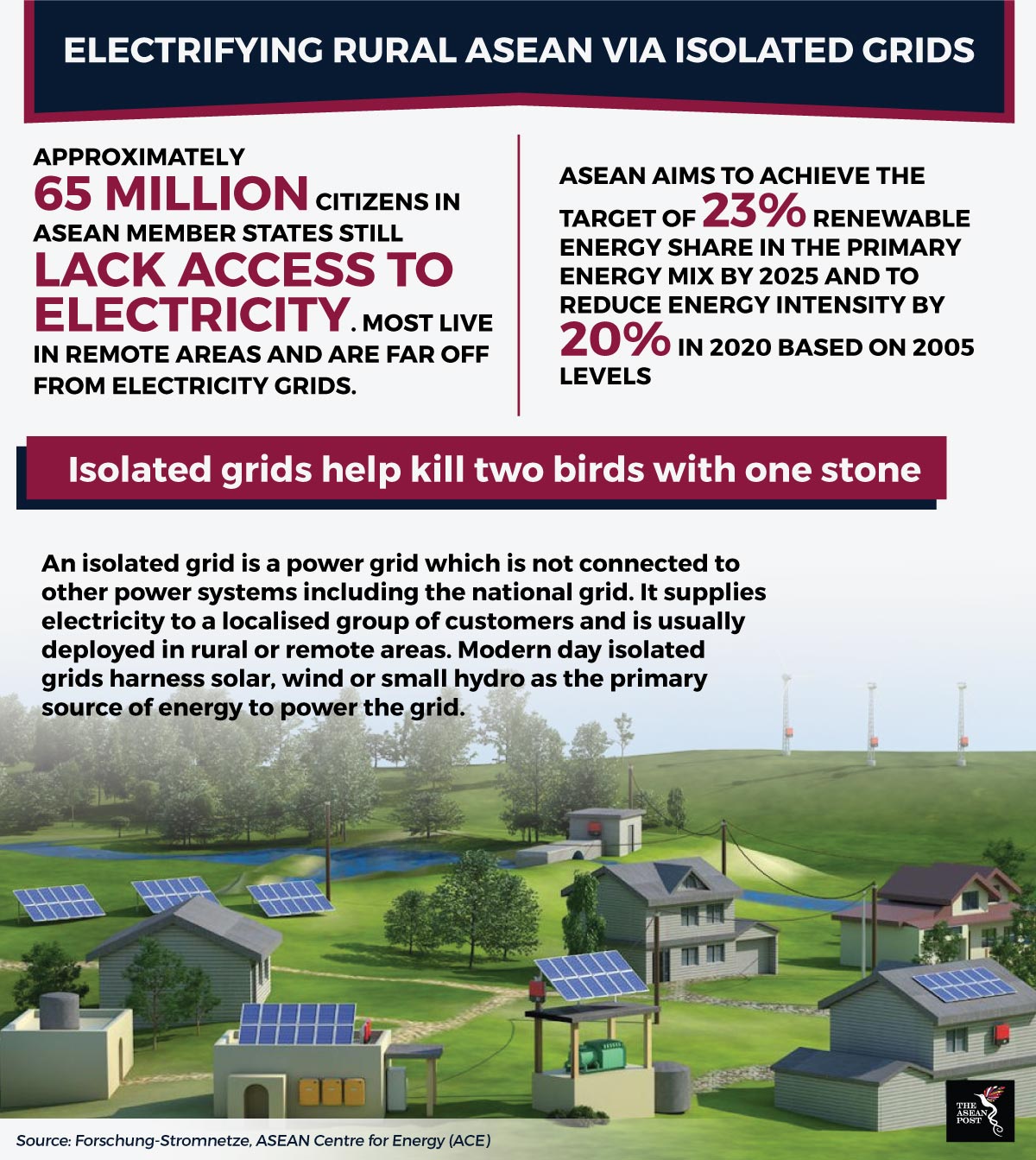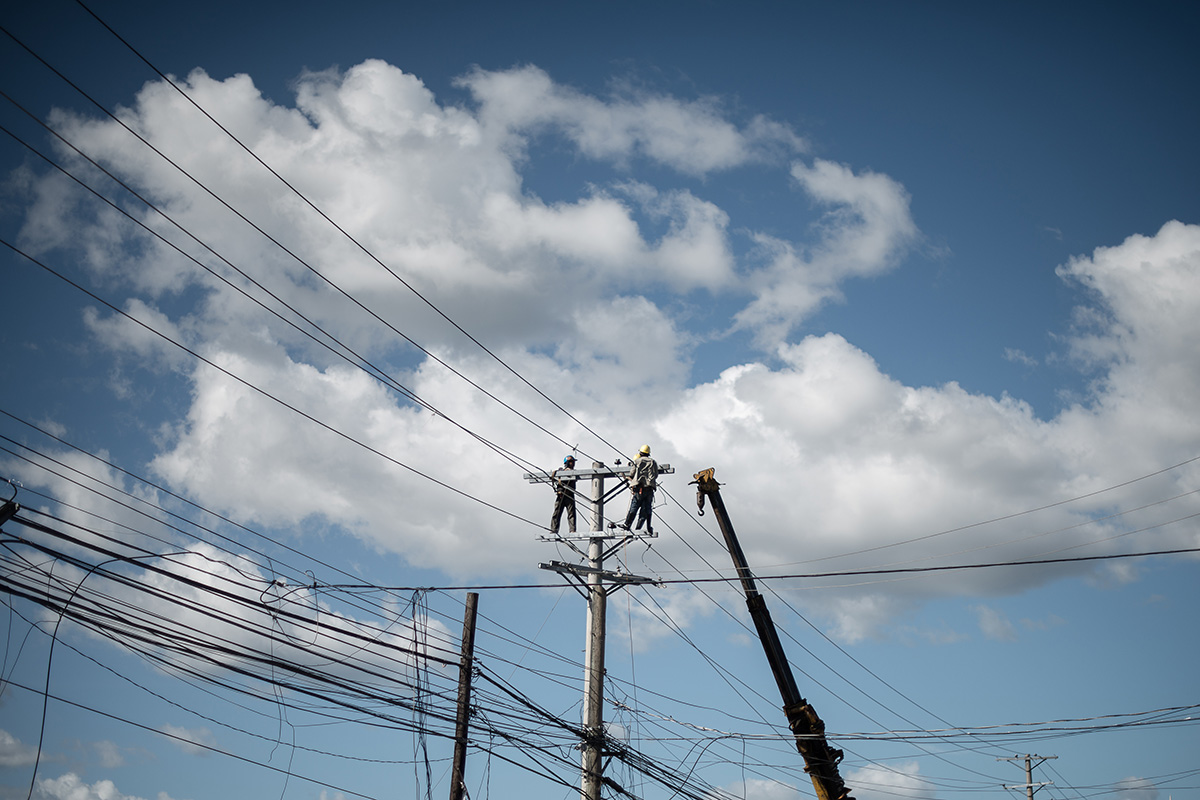As the name suggests, isolated grids – also known as mini grids, off grids or micro grids – are standalone grids that are not connected to other power grids. They involve small scale power generation of between 10 kilowatt (kW) and 10 megawatt (MW) and are usually deployed in rural communities living in inaccessible, remote areas.
Rural electrification is a potent enabler of economic growth and the Association of Southeast Asian Nations (ASEAN) region is not short of such areas. According to data sourced from the ASEAN Centre for Energy (ACE), about 336 million or 53.3 percent of people in Southeast Asia live in rural areas. The International Renewable Energy Agency (IRENA) estimates that almost 65 million people still lack access to electricity.
Given that electricity demands are projected to rise in the coming years, granting electricity access to unelectrified areas has become a top priority for ASEAN member states. Moreover, the current global embrace for environmentally-safe practices, means that member states are having to reach universal electrification in a sustainable manner.
However, Southeast Asia’s geography and varying electricity demands pose a challenge to this ambition. Due to the isolated nature of rural communities, not only must governments factor in the cost of longer than usual national grid transmission lines, they must also take into account overhead costs associated with installing those lines in treacherous environments. Additionally, in archipelagic countries like the Philippines and Indonesia, communities live on remote islands, making it virtually impossible to connect them to the existing national grid architecture as the lines would have to be installed over large bodies of water.
Other traditional means of rural electrification are also expensive, unreliable and in some cases, hazardous to the environment. Clunky, diesel-powered generators are dependent on a regular supply of environmentally-unsustainable fossil fuels to run. This can be challenging as the terrain makes it difficult to provide a steady fuel supply. Another method is through the use of regular household batteries which require constant replacements – increasing battery waste which contains toxic chemical pollutants. These methods of electrification can drive up the cost of electricity for rural villagers, who themselves are at times struggling to make ends meet.

The potential of solar powered isolated grids
Renewable isolated grids are reliable, cost efficient and environmentally friendly. The approaches to small power generation vary but predominantly, solar energy is the most popular method for off grid electricity generation.
IRENA estimates that the region is blessed with an average irradiance rate of between 1,500 to 2,000 kWh per square metre annually, which allows for a constant supply of solar energy for electricity generation. Besides that, the price of solar photovoltaic (PV) cells has been plummeting globally, bringing the average levelised cost of electricity (LCOE) for solar PV projects to below 22 cents per kilowatt-hour (kWh).
In Myanmar, US$ 90 million has been earmarked for isolated grid projects between 2016 to 2021. In 2017, the government there initiated eight mini-grid pilot projects for 10 villages that are situated more than 10 miles from the national grid. The Myanmar government is expected to reach a target of 34 villages by the end of the 2017-18 fiscal year and 350 villages by 2021.
In Indonesia, a 1.2 MW hybrid plant made up of solar PV, lithium-ion energy storage and a distribution system is being developed by French based, Akuo Energy for use in remote Indonesian villages. It aims to provide 24-hour electricity to approximately 400 households. The project also offers a new development model whereby the local community will be empowered to own the off-grid system.
As villages and rural communities become electrified, they are empowered to engage in economic activity which will further spur economic engines of growth. In short, where there is electricity, there is a lucrative incentive for local development which would have a positive knock on effect on the surrounding communities. For a developing region like ASEAN, this is an incredibly useful potential to tap into, and if isolated grids open the door towards achieving that, it should be embraced by all member states.
